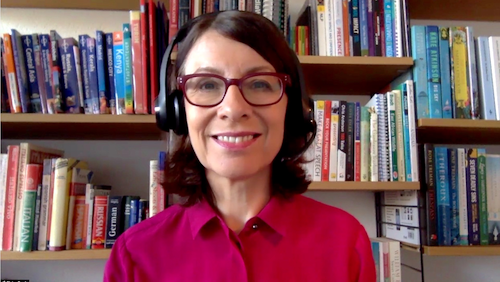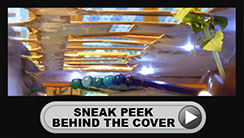
By Claire Doole, www.doolecommunications.com
Are you, like me, experiencing your own pandemic of webinars and meetings over various videoconference applications such as Zoom (my favourite), WebEx and Microsoft Team Meetings?
Are you that person who now turns off their camera citing connectivity issues so that you can focus on something else rather than actively take part in the videoconference? Or, as a friend related, that person who strategically places themselves with their back to the window or light so that all people see on the call is their silhouette?
It may be because the moderator is just failing to engage you and manage your limited attention span. That is not a criticism. We all have more limited attention spans when we are on these remote calls.
Here are some of my tips and techniques for moderating remotely so you captivate your audience. They are based on my experience as a former TV and radio journalist, panel moderator, public speaker and remote and in person trainer.
- Prepare. Prepare. Prepare. You need to be highly prepared when moderating a virtual meeting and know clearly the outcomes, structure and agenda, tailoring your content to your audience.
- Know your technology. You have to master the technology - mute/unmute icons, sharing screens, videos, using polling and brainstorming applications and the chat box. If you are hosting a large meeting, I recommend hiring a professional virtual producer.
- Frame your shot. Make sure your eyes are 1/3 the way down the screen. This means you avoid too much headroom, which will make you lose authority. Do look straight into your built-in webcam. If you look down, you will appear condescending. If you look up, you will lose authority.
- Be more animated than you are normally. If you want to keep your audience engaged, you have to be more expressive with your facial gestures, hands and voice modulation.
- Give visual cues. Encourage participants by giving visual cues, like nodding your head to encourage people while they are speaking. If they speak for too long, you move slightly forward and open your mouth to show them that you are going to interrupt.
- Explain the purpose, agenda and rules of engagement. You have to be clearer and more structured than when you moderate in person. Remember to signpost throughout the session where you are going to reassure people that you are on track.
- Frontload key points/messages. People remember best the first things they hear, so don't bury your key messages in the middle when attention levels are at their lowest.
- Actively listen. You need to think only about what the participant is saying, not your next question or anything else that is going on. Show you are doing this by picking up on what they say and making smooth transitions to your next point or participant.
- Manage the time. You need to manage the length of your presenters’ interventions and allow enough time for questions and answers orally or through the chat box.
- Bring closure. Recap main points and outline next steps.
If you are interested in improving your remote moderating skills, Claire runs a webinar on how to be engaging and manage your audience's attention span.
She coaches and trains remotely in the art of presenting, talking to the media, speechwriting, storytelling and panel moderating.
Author's bio
 Claire Doole is a former BBC correspondent and international spokeswoman who is passionate about helping people communicate with confidence. Since 2006, she has successfully trained hundreds of professionals in the art of presenting and public speaking, talking to the media, managing communications in a crisis, and writing for the web. In addition, she has coached C-level executives and public figures to give powerful TEDx and TED style talks in Europe and the Middle East. A Swiss and UK national, Claire trains and coaches in French and English.
Claire Doole is a former BBC correspondent and international spokeswoman who is passionate about helping people communicate with confidence. Since 2006, she has successfully trained hundreds of professionals in the art of presenting and public speaking, talking to the media, managing communications in a crisis, and writing for the web. In addition, she has coached C-level executives and public figures to give powerful TEDx and TED style talks in Europe and the Middle East. A Swiss and UK national, Claire trains and coaches in French and English.
Claire is also a highly experienced moderator having facilitated panel discussions with government ministers, NGO activists, humanitarians and human rights specialists at major events.









